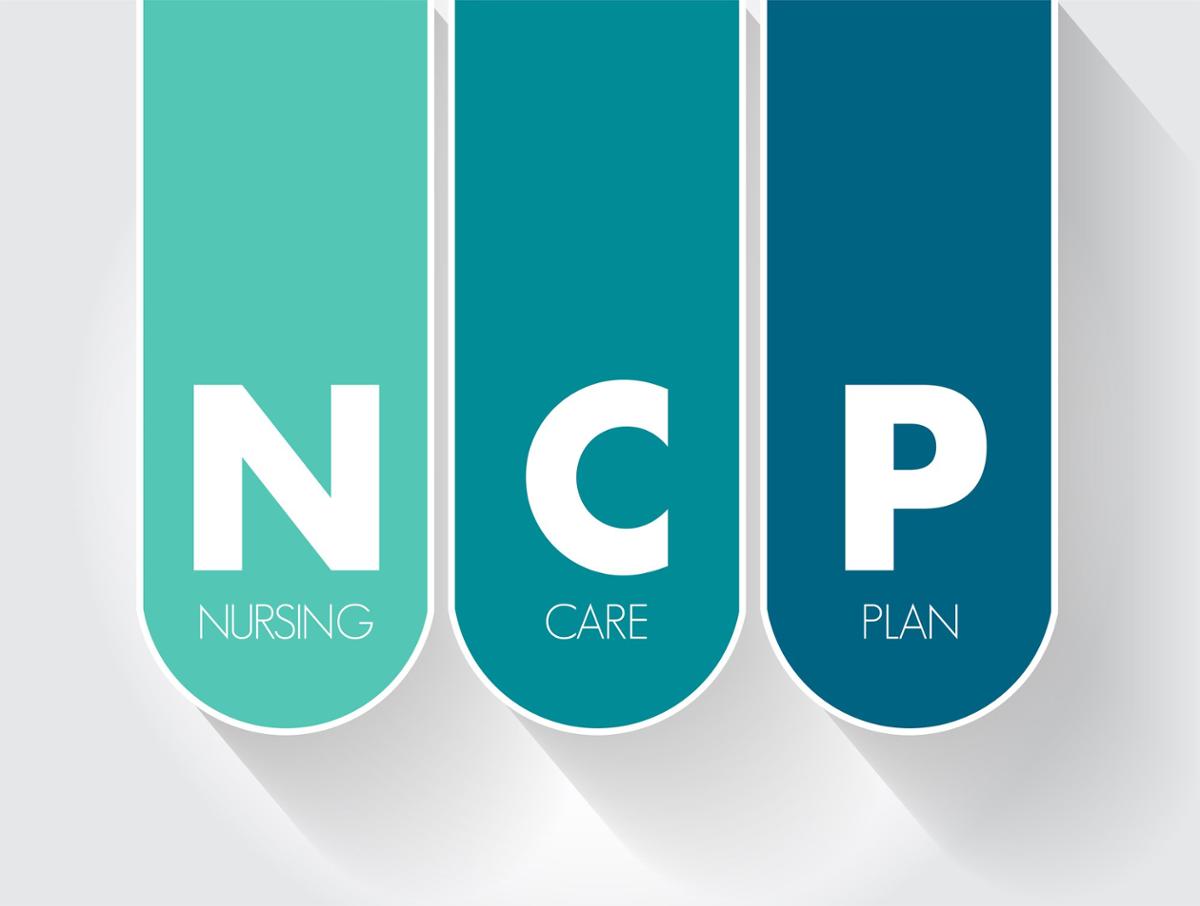Nursing Care Plans from A to Z: a Complete Guide for Registered Nurses

Nursing care plans are one of the most valuable tools nurses have at their disposal. They aid RNs in strategically outlining the best course of care for patients and enable quality communication within the healthcare team. Thus, writing and using a nursing care plan is one of the nursing skills that nursing students and experienced professionals have to cultivate consistently.
Much attention is devoted to mastering this aspect of the nursing process in nursing school, so nursing care plans are an integral part of any nursing school curriculum. And the need to write care plans continues after graduation because a critical part of nursing practice relies on efficiently written and implemented care plans.
This guide will walk you through everything you need to know about nursing care plans. Stick around to find the best practices for making a care plan, how to write it, and how to use this instrument to deliver quality care.
What Is a Nursing Care Plan?
The nursing care plan (NCP) is a process through which the nurse identifies, documents, and keeps track of a parent’s state or condition, needs, and risks. The elaboration of the care plan starts when the patient is admitted to the medical facility. The NCP is continuously updated throughout the patient’s stay based on their condition and response to treatment. Typically, creating a nursing care plan follows a five-step framework.
The nursing care planning process ensures that the quality of patient care is always up to the highest standards. It sets the groundwork for patient-centered care and is a sign of excellence in nursing practice.
Nursing care plans have a few significant objectives. First off, they aim to encourage evidence-based nursing care. Accounting for the fact that psychological, social, and spiritual health are as potent as physical health, nursing care plans advocate for holistic care to manage and prevent diseases. Other aims of this practice include:
- Identifying achievable goals for the nursing team.
- Spelling out desired care outcomes.
- Measuring nursing care.

What Are The Types of Nursing Care Plans?
Nursing care plans are either informal or formal. The informal care plans are courses of action in response to a patient’s state that the nurse has thought of but hasn’t yet documented or formalized.
A formal nursing care plan is the written version of the plan. It details the patient’s care information, information about the nursing interventions, the patient’s state, response to nursing interventions, and more.
Standardized care plans are formal nursing care plans in which the RN specifies the care they offer to a group of clients with everyday needs.
Individualized care plans are formal nursing care plans tailored to the needs of a particular patient. They are specific and unique to each patient’s condition or requirements.
Student Nursing Care Plans vs. Professional Nursing Care Plans
Student nursing care plans and the care plans written by professional registered nurses have the same overall goal: to guide the process of nursing care. However, there are some important differences between them.
Care plans formulated by aspiring RNs in nursing schools are significantly longer. They are written with greater detail and contain more thorough information. It is more time-consuming to devise student nursing care plans. Still, it’s a good training exercise. It solidifies the students’ knowledge and ensures they grasp and apply essential nursing concepts.
Nursing care plans written by Registered Nurses in clinical settings are generally more concise. Unlike students, working professionals don’t have to write down every nursing judgment and decision-making step. Additionally, the clinical setting version of nursing plans does not include the rationale – an extra column in which nursing students have to present the scientific explanations for the chosen interventions.
What Are the Main Reasons to Have a Care Plan?
There are many advantages to writing and implementing nursing care plans. They may be tedious to create, but they benefit nurses, patients, and the entire healthcare system in the long run. These are some of the reasons why care plans play such a vital part in patient care:
- Nursing care plans are a roadmap to quality patient-centered care. Care plans help structure and organize patient care. When elaborating them, the nurse employs critical and holistic thinking, leading to better patient outcomes.
- Nursing care plans ensure the continuity of care. Nurse care plans need to be written or computerized, and so they become a part of a patient’s health record. Consequently, nurses have access to the same patient information. Despite working different shifts, all RNs caring for a patient will be aware of the diagnosis, prior nursing interventions, and their coworkers’ observations and insights. This means that nurses work towards the same goal, which leads to better patient results.
- Nursing care plans ensure collaboration with other members of the healthcare team. In addition to their fellow RNs, nurses also have to collaborate with physicians, assistants, social workers, physical therapists, and other health team members. Nursing plans put all the information in one place and make it easily accessible for all members of this interprofessional team. Thus, everyone is aware of the desired outcomes and can work towards them.
- Nursing care plans keep patients engaged. An important part of formulating nursing care plans is setting goals for and with patients. This step motivates patients to be more involved in their recovery, makes them more compliant to treatment, and ensures better outcomes.
- Nursing care plans can serve as evidence of given care. These are documents through which nurses document their interventions, thus acting as a record in case of lawsuits or accusations that they failed to adhere to nursing standards. They maximize the efficiency of the nurses while also shielding them from potential problems.
- Nursing care plans act as guides for reimbursement. Insurance companies use medical records to determine the amount they will pay concerning the care the patient received.

What Are the Components of a Nursing Care Plan?
Nursing care plans are essentially the written outcome of the nursing process. For this reason, the structure of a nursing care plan closely follows the five steps of the nursing process: assessment, diagnosis, planning, implementation, evaluation.
More precisely, nursing care plans usually follow this template:
- Nursing diagnosis
- Desired outcomes/goals
- Nursing interventions (or implementations)
- Evaluation
Let’s look at each step more closely.
Before everything else, a care plan must include a nursing diagnosis. To formulate a nursing diagnosis, you need to conduct a thorough assessment of the patient’s health, consisting of objective or subjective data.
Learn everything you need to know about nursing diagnoses in our complete guide on the subject.
After establishing a nursing diagnosis, the next step in your care plan is outlining desired outcomes and goals. The goals may be long-term or short-term, but all of them ought to be realistic and achievable.
Following that, you need to start documenting the nursing interventions you carry out.
The last component of the nursing plan is evaluation. This step covers the information about the outcomes of the nursing interventions.
How to Write a Nursing Plan?
Developing a nursing plan may seem daunting at first. But it doesn’t have to be. Now that you’re familiar with the components, all you have to do is follow the step-by-step guide that we included below.
Conduct patient assessment.
When you start creating a nursing plan, you first gather information about the patient’s state using specific nursing assessment techniques and other data collection methods. This may include conducting a head-to-toe physical assessment, taking vitals, reviewing the patient’s health history and medical records, asking questions directly to the patient or their family, performing diagnosis studies. It is essential to be thorough and careful in gathering health data.

Analyze and catalog all the information you got in the previous step.
By now, you have large chunks of information about your patient’s state, their history, the health risks they encounter, and more. You need to structure it and pick the relevant details. Based on that, formulate a nursing diagnosis, which will help set your priorities and determine some desired outcomes.
Formulate your nursing diagnosis.
All the data you collected will help you in the diagnosing process. You should write the nursing diagnosis in line with the NANDA-I format, the internationally recognized way to identify and catalog RN diagnoses. Prioritizing will play a vital role in creating a nursing diagnosis. For this, Maslow’s hierarchy of needs will prove a helpful tool. Once you have indicated a diagnosis, you can set goals and pinpoint the desired nursing outcomes.
Find everything you need to know about writing a nursing diagnosis in our complete guide on the subject.
Set SMART patient goals.
After writing a diagnosis, you must set goals for the direction of care. This is essentially the planning stage, where you outline what you hope to achieve once the nursing process is implemented. These goals will pave the path for planning nursing interventions. Later on, they will be the standards by which you evaluate the patient’s health progress.
It’s crucial to keep the goals clear, realistic, and specific. A good strategy for setting goals as part of the nursing plan is by employing the SMART technique:
Specific – Make sure the nursing goals you choose are unambiguous and well-defined.
Measurable – Set specific metrics to determine/measure the efficacy of your actions and the patient’s progress.
Achievable – The nursing goals must be realistic and possible to achieve.
Realistic – They need to be appropriate in relation to the overarching care plan.
Time-bound – Deadlines can help you keep better track of your interventions and how efficient they are. These can be flexible.
Goals can also be short-term or long-term. For the most part, as a nurse, you will devise short-term goals because you are mostly focused on the patient’s immediate (or near future) needs or concerns. Long-term nursing goals are mostly used by nurses working in home healthcare, nursing homes, or with patients suffering from chronic health problems.

Choose appropriate nursing interventions
Nursing interventions are the actions a nurse takes to achieve patient goals and reach the desired outcomes. The interventions focus on reducing the causes of the nursing diagnosis or decreasing the risk factors. You may follow the doctor’s guidelines – dependent nursing interventions – to choose the appropriate interventions. Also, you can develop nursing interventions yourself, drawing from evidence-based practice – independent nursing interventions. Another type of nursing intervention is collaborative, which refers to the actions or activities you carry out in collaboration with other healthcare team members.
There are seven categories of nursing interventions: family, behavioral, physiological, complex physiological, community, safety, and health system interventions. Some of the most common nursing interventions you can expect to perform during each shift include: assessing pain, giving medications, checking vital signs at specific intervals, changing the resting position, initiating fall precautions, or educating the patient.
After identifying the appropriate interventions, you will perform them in the implementation phase of the nursing process.
Provide rationale for the chosen nursing interventions
This additional step is only included in student nursing care plans. Writing down the rationale in the student care plan serves as an exercise for students to ensure that they are fully aware of why a specific nursing intervention was the best course of action.
Perform evaluation
Evaluation is the final step of the nursing care plan. In this phase, the nurse will analyze whether the care goals have been met and whether or not the nursing plan was effective. Importantly, evaluation is an ongoing process. Based on its conclusions, you can continue, change, or cancel nursing interventions.
Tips and Tricks for Writing Efficient Nursing Care Plans
Keep your writing skills sharp.
More than just an important document, a nursing care plan is a guide to efficient nursing care and interdepartmental collaboration. That’s why you need to be efficient in writing it. As much as possible, try to write everything down immediately not to miss or forget any details. Write clearly and concisely, but make sure you and the other members of the team understand the terms or abbreviations you use. Include dates and times.
Always keep the plan up to date.
Make sure your care plans are constantly updated with the latest information. You should always document the changes in a patient’s state, the updates in the nursing interventions, or other developments that may occur in the process of care.
Keep the plans accessible and easily shareable.
An essential characteristic of care plans is that they must be easily shareable with relevant stakeholders. These may include patients, other doctors or nurses, or insurance companies. The format for the nursing care plans may differ from one medical institution to another. Still, for the most part, they are electronic and become part of the electronic health record (EHR). Thus, they can be easily accessed by everyone.

Nursing Care Plan Examples
As a nurse, you’ll have to write nursing plans for a wide variety of conditions: from hypertension, infection, decreased cardiac output, impaired skin integrity, acute pain to constipation, anxiety, diabetes, dehydration, and many more. To better illustrate how to write nursing care plans, we have assembled some examples. Bear in mind that the template of the nursing plan may differ from one institution to another.
| Nursing diagnosis | Desired Outcomes | Nursing Interventions | Evaluation | |
| Nursing care plan for risk for falls | Risk for falls |
|
|
|
| Nursing care plan for pain: | Acute pain |
|
|
|
| Nursing care plan for hypertension | Risk for Decreased Cardiac Output |
|
|
|
Are you Ready to Start Writing Efficient Nursing Care Plans?
Writing efficient, goal-oriented, easily-accessible, clear, and evidence-based nursing care plans is pivotal for any Registered Nurse.
In order to develop nursing care plans that encompass all these qualities, you need to be knowledgeable, display critical thinking, engage in teamwork, and focus on offering patient-centric care. If you follow these guidelines, the care plans you write will help elevate your professional status and the entire healthcare process.
We’re here to make your journey a little easier. Enroll in Nightingale College’s BSN program or advance your education with an online RN-to-BSN and discover that writing nursing care plans doesn’t have to be a daunting process.

